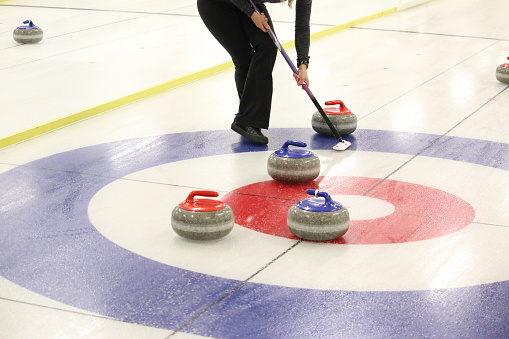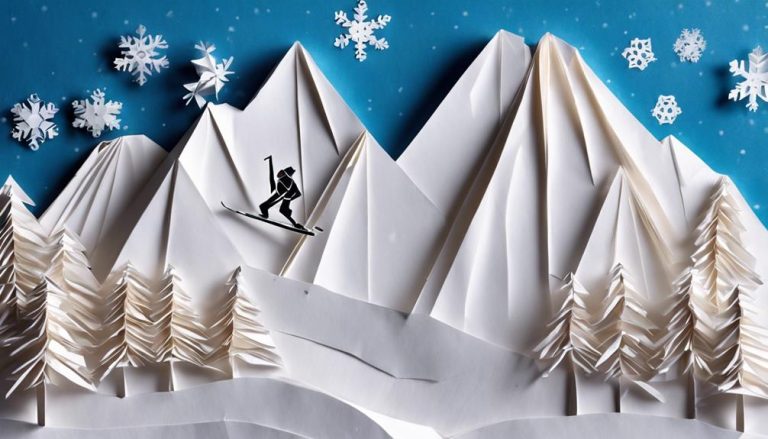General Rules of Snowkiting
When stepping into the snowy expanse for some snowkiting, remember the important general rules that govern this exhilarating sport. Safety gear and equipment are paramount, ensuring your protection while gliding across the icy terrain. But that's just the tip of the iceberg. As you gear up, keep in mind the wind conditions and weather awareness necessary for a successful outing. Stay tuned for more insights on how to navigate the thrilling world of snowkiting with skill and caution.
Safety Gear and Equipment
When gearing up for snowkiting, make sure you have the essential safety gear and equipment to protect yourself and enhance your experience on the snow-covered terrain. Proper equipment maintenance is crucial before hitting the snow. Check your kite lines, control bar, harness, and safety systems regularly to ensure everything is in excellent working condition. Your gear selection plays a vital role in your safety and performance. Choose the right kite size for the wind conditions to prevent accidents and maximize your enjoyment.
Safety precautions are non-negotiable when snowkiting. Always wear a helmet, impact vest, and appropriate clothing for the weather conditions. Have a reliable emergency response plan in place. Make sure you understand how to activate your safety systems and how to perform a self-rescue if needed. Being prepared can make a significant difference in critical situations. Stay vigilant and aware of your surroundings at all times to avoid unnecessary risks. By prioritizing safety and being proactive, you can fully embrace the freedom and thrill of snowkiting.
Wind Conditions and Weather Awareness
As a snowkiter, understanding wind speed is crucial for a safe and enjoyable experience on the snow. Be aware of weather hazards like sudden gusts or changing conditions that can affect your ride. Always prioritize safety measures to ensure a successful and thrilling snowkiting session.
Wind Speed Importance
Understanding wind speed is crucial when snowkiting, as it directly impacts your safety and the performance of your kite. To fully grasp the significance of wind speed in snowkiting, you must consider various safety precautions. Here is a table that illustrates the importance of wind speed:
| Wind Speed | Impact on Snowkiting |
|---|---|
| Low | Difficult to generate enough power for jumps |
| Moderate | Ideal for most snowkiters, offering a good balance of power and control |
| High | Requires advanced skills, can be dangerous for inexperienced riders |
Weather Hazards to Consider
Prepare yourself for the unpredictable challenges that weather hazards, including wind conditions and weather awareness, can present when snowkiting. When hitting the snowy terrain, here are essential aspects to consider:
- Avalanche risks, terrain assessment: Always assess the terrain for potential avalanche risks. Stay informed about the snowpack conditions and be vigilant about any signs of instability. Proper terrain assessment can save lives.
- Frostbite prevention, clothing layering: To avoid frostbite, ensure your clothing layers are appropriate for the weather conditions. Dress warmly and in layers, including moisture-wicking base layers, insulating mid-layers, and windproof outer layers. Protect your extremities with gloves, hats, and warm socks.
- Wind Conditions: Stay alert to sudden changes in wind speed and direction. Be prepared to adjust your kite size or even land if the wind becomes too strong or gusty. Regularly monitor weather forecasts and trust your instincts.
Safety Measures for Kiting
When navigating the exhilarating world of snowkiting, your safety hinges significantly on your awareness of wind conditions and weather nuances. Understanding the wind's behavior is crucial for your well-being. Always assess the risk before starting your adventure. Check the weather forecast, pay attention to wind speed, and be aware of any sudden changes in conditions. In case of emergencies, make sure you are prepared. Familiarize yourself with emergency procedures and first aid techniques. Prevention strategies play a vital role in keeping you safe while snowkiting. Stay vigilant, wear appropriate safety gear, and never underestimate the power of nature. By prioritizing safety measures and respecting the elements, you can fully enjoy the freedom and thrill of snowkiting.
Respect for Other Snowkiters
When you're out on the snowkiting spot, remember that safety in maneuvers and sharing kite zones are crucial aspects of respecting other snowkiters. Be mindful of your surroundings, communicate clearly with fellow kiters, and always prioritize safety to ensure a positive experience for everyone involved. By following these simple guidelines, you contribute to a harmonious snowkiting community that thrives on mutual respect and shared enjoyment of the sport.
Safety in Maneuvers
Ensuring the safety of fellow snowkiters is paramount while engaging in maneuvers on the snow. Here are three crucial ways to respect other snowkiters:
- Maintain Proper Technique: Always adhere to the correct snowkiting techniques to prevent accidents and collisions with others. Proper technique not only keeps you safe but also those around you.
- Communicate Effectively: Use clear hand signals and verbal communication to indicate your intentions and warn others of any potential dangers. This ensures everyone in the vicinity is aware of your movements.
- Avoid Common Mistakes: Learn from past errors and avoid repeating common mistakes such as sudden turns or unpredictable maneuvers that could endanger other snowkiters. Stay alert and considerate to create a safe environment for all.
Sharing Kite Zones
Respecting other snowkiters' space and safety is essential when sharing kite zones on the snow. Following etiquette guidelines and recognizing territory boundaries are crucial for harmonious coexistence. Conflict resolution should be approached with patience and understanding, valuing each rider's right to enjoy the snow. When sharing responsibilities, communicate openly and be willing to compromise for the collective enjoyment of all snowkiters. Remember, the snow is vast, but it is our shared playground. By being considerate and mindful of others, we create a community of freedom and respect on the snowy slopes. So, embrace the spirit of camaraderie, honor the unspoken rules, and let the exhilaration of snowkiting unite us all in this thrilling adventure.
Proper Training and Skill Development
For optimal progress in snowkiting, honing your skills through dedicated training sessions is essential. To truly excel in this exhilarating sport, consider the following:
- Progression Techniques: Utilize proven methods to enhance your snowkiting abilities. Focus on mastering basic skills such as controlling the kite, riding upwind, and performing smooth transitions before advancing to more complex maneuvers. Progression is key to unlocking the full potential of your snowkiting experience.
- Training Programs: Engage in structured training programs tailored to your skill level and goals. These programs provide a systematic approach to developing your snowkiting skills, ensuring steady improvement and preventing plateaus in your progression journey.
- Instructional Resources: Take advantage of instructional resources such as online tutorials, workshops, and expert guidance. Learning from experienced snowkiters and instructors can offer valuable insights, tips, and techniques to elevate your performance on the snow-covered terrain. Remember, continuous learning is the gateway to mastering the art of snowkiting.
Terrain Selection and Awareness
Selecting the right terrain and staying aware of your surroundings are fundamental aspects of mastering the art of snowkiting. When you engage in this exhilarating sport, understanding snowkiting etiquette and conducting a thorough terrain assessment are crucial for your safety and the enjoyment of others. Respect for nature and fellow snowkiters is paramount. Before hitting the snow, take a moment to assess the terrain. Look for potential hazards such as rocks, trees, or icy patches that could pose a danger. By being vigilant and proactive in your terrain assessment, you not only safeguard yourself but also contribute to a positive snowkiting community.
Maintaining awareness of your surroundings is key. Keep an eye out for other snowkiters, skiers, or snowboarders sharing the area. Communicate clearly and respectfully, using signals when necessary to indicate your intentions. By being considerate and mindful of those around you, you foster a culture of cooperation and safety essential for everyone's enjoyment. Remember, in snowkiting, unity and awareness make the experience truly liberating.
Communication and Signals
When engaging in snowkiting, effectively communicating with others through signals is essential for a safe and enjoyable experience. Clear communication helps ensure everyone is on the same page, enhancing coordination and safety on the snow-covered terrain. Here are some key points to consider:
- Hand signals and verbal cues: Establish a set of hand signals and verbal cues with your snowkiting partners before hitting the snow. These signals can convey important messages such as speed adjustments, changing directions, or stopping altogether. Consistent use of these signals can help prevent misunderstandings and accidents.
- Team communication and non-verbal signs: In a team setting, it's crucial to maintain open communication channels. Pay attention to non-verbal signs like body language and facial expressions that can indicate if someone needs assistance or if there are potential hazards ahead. Stay connected with your team members to ensure a cohesive and synchronized snowkiting experience.
- Stay alert and responsive: Be attentive to the signals around you and be prompt in responding to them. Quick reactions based on effective communication can prevent collisions, improve teamwork, and ultimately make your snowkiting adventure safer and more enjoyable.
Emergency Preparedness and Protocols
In snowkiting, being prepared for emergencies and having clear protocols in place is crucial for ensuring the safety of yourself and your fellow kiters. Emergency response in snowkiting can mean the difference between life and death. Before hitting the snow-covered fields, make sure you and your kiting buddies establish communication protocols. Designate specific signals or calls for different situations like a lost kite, an injured kiter, or sudden weather changes. These protocols should be clear, understood by everyone, and regularly practiced.
It's vital to have a plan in place for emergencies. In the case of an accident or someone getting lost, knowing how to react swiftly and effectively can save lives. Ensure that all kiters carry a fully charged phone or a two-way radio for communication. Additionally, always inform someone on land about your snowkiting plans, including your intended route and estimated return time. Remember, being proactive and prepared is key to enjoying the thrill of snowkiting safely.
Frequently Asked Questions
How Can I Prevent Frostbite While Snowkiting?
To prevent frostbite while snowkiting, layer up with moisture-wicking clothing, wear windproof gear, and cover exposed skin with protective clothing. Stay aware of wind chill and your body's signals. Prioritize skin protection to enjoy the thrill safely.
Are There Any Specific Rules or Regulations for Snowkiting in My Area?
When it comes to snowkiting, safety guidelines are key to your adventure. Check permit requirements in your area before hitting the slopes. Embrace the freedom, but always prioritize safety and respect regulations.
What Should I Do if I Encounter Wildlife While Snowkiting?
When you encounter wildlife while snowkiting, it's like stumbling upon a hidden treasure. Stay calm, avoid sudden movements, give them space, and enjoy the magical moment. Respect their habitat, prioritize safety always.
How Can I Properly Maintain and Store My Snowkiting Equipment?
To keep your snowkiting gear performing at its peak, proper maintenance is key. Clean your equipment after each use, inspect for wear and tear, store it in a cool, dry place away from sunlight to prolong its lifespan.
Are There Any Specific Techniques for Launching and Landing With a Snowkite?
Feel the wind's dance as you prepare to soar. Understand wind dynamics for safe launches. Master kite control and perfect body positioning. Safety measures are vital; embrace the elements with skill and confidence.






